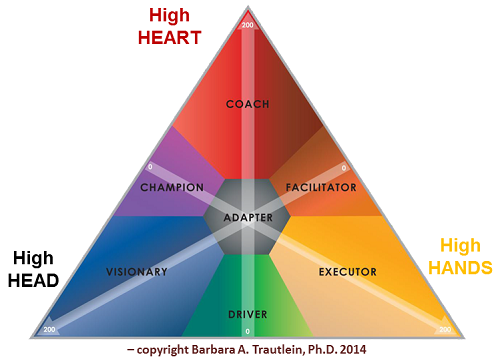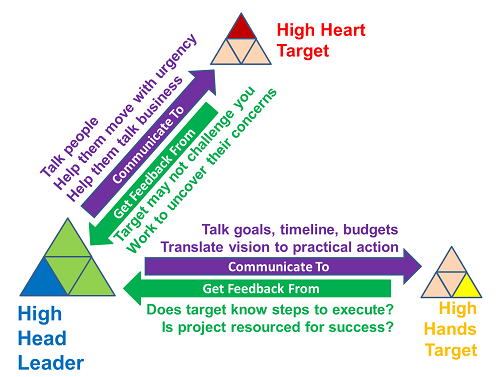When you walk in the room, who shows up for Read more →
The Platinum Rule for Visionary Change Leaders
Posted Friday, January 9, 2015Head-oriented leaders are strategic and purpose-oriented, adept at inspiring others toward the bright new future. They serve as a lighthouse to help guide others toward the long-term vision for change. In Barbara Trautlein’s model of change intelligence (CQ), visionaries, drivers, and champions are high head change leaders.

But Enough About You. What About Them?
Self-awareness about your CQ style is important, but it is only the starting point. To be effective in leading change with a variety of people, you must know their CQ and how to best interact with them. Here’s a key principle:
People don’t think much about your CQ style. People want to be treated according to their CQ style.Trautlein refers to this as the platinum rule: don’t treat people like you want to be treated (the golden rule). Treat people like they want to be treated.
Let’s consider a CEO who is a high head change leader – a visionary. In the executive suites, surrounded by like-minded visionaries, the CEO’s conversation will be strategic, looking at change from 20,000 feet. But if we take the elevator down to ground level, the change looks different. Like the emperor in Hans Christian Andersen’s tale of The Emperor’s New Clothes, the power distance between the executive suite and the rest of the organization can create communication disconnects. To implement lasting change, the CEO must adapt to high heart and high hands target audiences.
With high-heart people, the CEO needs to talk about how people are handling the change and help high heart people talk business. Because of the difference in power between executives and supervisors, the visionary CEO will need to be especially adept at coaching the target audience to raise concerns.
With high hands people like project managers, the CEO must help translate the overall vision for change into practical actions. To do this, the CEO needs to be ready to talk details. And, a visionary executive needs to ensure that the project manager knows what’s next and has the resources to make the change happen.
A visionary CEO may be tempted to state the vision for the change and move on to the next big decision. That violates the platinum rule.
You must look at the change from the perspective of your audience. And you cannot rely on your subordinates to correct your communication oversights. Your power and authority will tend to insulate you from your audiences. You will only know the depth of your mistake when the change fails.
Bottom line: To make change happen, know yourself and know your people so you can communicate in their language. Visionary change leaders have to guard against wearing the emperor’s new clothes. Get in the trenches. Get to know the people and the project details so you can connect people and tasks with your vision for change.
 Then, you will be ready for dialogue and insight for intelligent change.
Then, you will be ready for dialogue and insight for intelligent change.


Pingback: The Platinum Rule for People-Focused Change Leaders